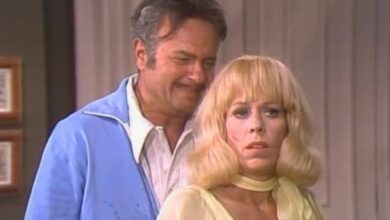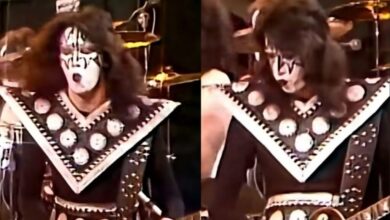Dreaming in Melody: The Enduring Magic of Bobby Darin’s “Dream Lover”
Bobby Darin’s “Dream Lover” first twinkled into existence when he penned and recorded it on March 5, 1959. We can almost picture him in the studio, heart full of yearning, weaving together melody and lyrics that speak of longing for that perfect someone. It was a true plunge into romantic imagination, and it would go on to carve his legacy.
When the single hit the airwaves the following month, it fast became an anthem of hope and desire. Audiences everywhere fell for its charm, and before long, “Dream Lover” climbed to number two on the US Billboard Hot 100—just shy of the top spot. It was a hit that felt both intimate and universal.
The song didn’t just shine in the US—it crossed oceans and hearts. In the UK, “Dream Lover” ruled the charts for four straight weeks in the summer of 1959, giving Darin a moment of international adoration. For a young singer with a frail heart, that kind of reach must have felt like destiny.
Studio magic added to the song’s glow. Industry legends Ahmet Ertegun and Jerry Wexler produced the track, while Tom Dowd engineered it. Even Neil Sedaka sat in on piano, bringing his touch to those nostalgic chord changes that tug the heartstrings every time.
Musically, Darin blended rock‑and‑roll energy with the sweet nostalgia of doo‑wop—creating a sound that felt modern and timeless all at once. Fans could feel the double bass plucking, the piano swirling, and background vocals floating like gentle promises. It was romance made audible.
The song’s romantic pulse resonated through decades. It was covered by a host of artists across genres, from Dion’s smooth version to Billy “Crash” Craddock’s country‑tinged hit. Tanya Tucker and Glen Campbell brought it back as a duet. Even Ricky Nelson performed it on Saturday Night Live. Each interpretation kept its spirit alive.
You might call it a cultural touchstone—not just in music, but on screen too. “Dream Lover” was featured in movies like Hot Shots! and Diner, and even made its way onto TV stages. Decades on, it still drifts through popular media, leaving a soft glow.
Behind the scenes, Bobby Darin’s life was as dramatic as any love song. Born Walden Robert Cassotto and struggling with severe health issues, he seemed keenly aware of time’s fragility. His heart‑strong ballads like “Dream Lover” felt like musical whispers against mortality—a reminder to love while you can.
That biography inspired a stage celebration too: Dream Lover: The Bobby Darin Musical hit theaters in Sydney in 2016, complete with songs and scenes that brought his story to life. It ran into 2018, earning acclaim and capturing another generation’s hearts with that timeless melody.
Recording “Dream Lover” gave Darin more than a hit—it unlocked creative freedom. Suddenly, he could branch into standards, jazz, folk, and country. It paved the way for masterpieces like “Mack the Knife” and “Beyond the Sea,” shifting him from teen idol to musical chameleon.
Its chord progression is a beauty in itself. Darin leaned on the I–vi–IV–V pattern in verses, the nostalgic backbone of doo‑wop, then jazzed it up with call‑and‑response flourishes and a rock‑ish chorus. It’s the kind of song you don’t just hum—you feel it.
Underneath all the showmanship and chart stats, “Dream Lover” held a quiet truth: we all want someone to call our own, to make the lonely nights a little less lonely. Darin bottled that feeling and released it into the world, and it took off like magic.
Even today, if you close your eyes and hear those opening notes, you’re transported to a simpler time—pink neon lights, slow dances, hopeful glances. It’s retro, yet instantaneously relatable. That’s the power of a true Dream Lover.
In the end, “Dream Lover” isn’t just a song—it’s a little piece of collective memory. A song that reminds us to dream, to hope, to reach for an ideal love even if it’s just in melody. And thanks to Darin, millions have done just that.





